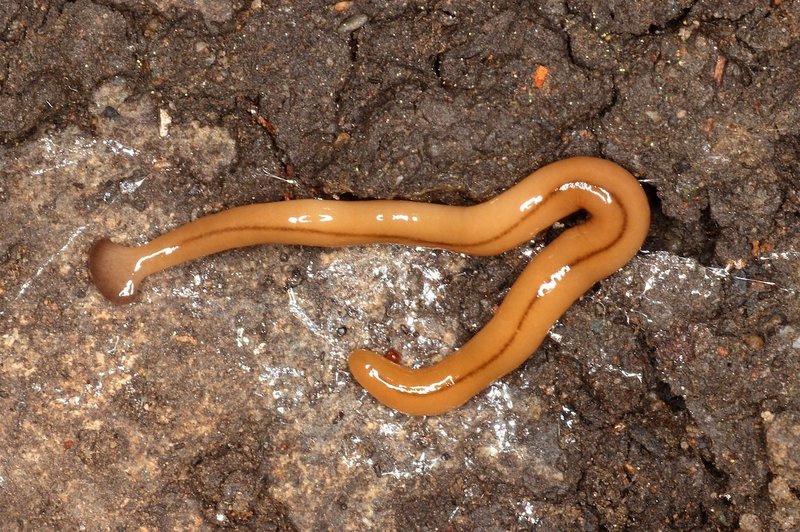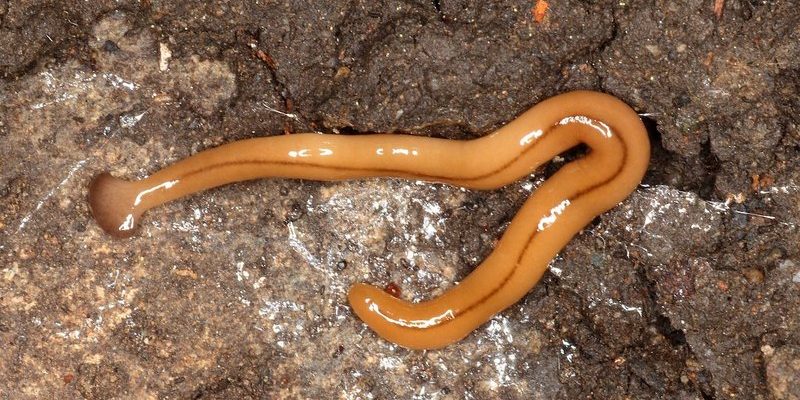
Imagine your garden as a cozy home. Just like you wouldn’t want to welcome an uninvited guest into your living room, you want to keep pests like hammerhead worms at bay. A good cleanup isn’t just about tidying up; it’s about creating a habitat where these pests don’t feel welcome. In this article, we’ll go through practical steps you can take to make your garden less appealing to these wormy foes.
What Are Hammerhead Worms?
Before diving into cleanup practices, let’s take a moment to understand what we’re dealing with. Hammerhead worms, known scientifically as *Bipalium kewense*, are flat, elongated creatures that can grow up to a foot long. Their unique shape resembles a hammerhead shark, hence the name. These worms are primarily nocturnal, coming out at night to hunt down prey like earthworms, which can devastate your soil quality.
What makes hammerhead worms particularly concerning is their reproductive capacity; they can reproduce easily, leading to larger infestations. You might think, “A worm is just a worm,” but when it comes to gardening, understanding these creatures allows you to tackle the problem more effectively. It’s like knowing your enemy before going into battle!
Regular Garden Cleanup: The First Line of Defense
Regular cleanup is your first shield against hammerhead worms. By keeping your garden tidy, you reduce the chances of these worms finding a suitable home in your yard. Make a habit of cleaning up fallen leaves, dead plants, and any garden debris, especially in the fall. This organic matter can provide a nice cozy home for these pests, making your garden a prime target.
Consider creating a cleanup schedule. Maybe you set aside an afternoon every week to do a quick assessment of your garden. When you regularly check for dead plant material, you not only keep hammerhead worms at bay but also promote better airflow and sunlight for your healthy plants. Think of it as giving your garden a haircut to keep it looking sharp!
Choosing the Right Mulch
Mulch can be your garden’s best friend, but it can also attract unwanted critters if you’re not careful. Using organic mulch—like straw or grass clippings—can create a perfect habitat for hammerhead worms. Instead, opt for inorganic or gravel mulch to discourage these pests. While this approach may not provide the same aesthetic, it helps maintain a less inviting environment for hammerhead worms.
You might ask, “What’s the big deal with mulch?” Well, mulch plays a crucial role in moisture retention and weed control. Just remember that the type you choose can either hinder or help your gardening goals. So be choosy about your mulch to keep that garden looking great and worm-free!
Remove Excess Moisture
Excess moisture is like a welcome mat for hammerhead worms. These creatures thrive in damp environments, so keeping your garden well-drained is essential. Check for any standing water or overly saturated soil, especially after heavy rain. If you find areas that stay wet, consider improving drainage through methods like digging trenches or adding drainage tiles.
Honestly, managing moisture is more than just a worm deterrent—it’s also good for your plants! Healthy soil with good drainage promotes strong root systems, resulting in happier, thriving plants. Plus, it’s one less worry when you’re out there enjoying your beautiful garden.
Crop Rotation and Plant Diversity
Ever heard of crop rotation? It’s a gardening technique where you change the type of plants you grow in a specific area each season. This practice not only improves soil health but also disrupts pest life cycles. Hammerhead worms usually favor certain plants, so rotating them can keep these pests guessing and help prevent infestations.
Additionally, planting a diverse array of plants will confuse the hammerhead worms and other pests. When you mix things up, it’s like throwing a party where no one knows anyone else—there’s less chance of guests sticking around! Consider adding aromatic plants, which not only deter pests but also enhance your garden’s fragrance.
Physical Barriers: Keeping Them Out
Sometimes, the best offense is a good defense. Using physical barriers can significantly reduce the chances of hammerhead worms invading your garden. Using materials like landscape fabric or row covers can create a protective shield against these unwanted guests. This method is especially useful if you are starting new plants or during vulnerable growth stages.
Think of it as setting up a fence around your garden. It’s not foolproof, but it helps keep most intruders at bay. Just remember to monitor these barriers regularly to ensure they’re effective and not creating any unintended issues, like harboring moisture.
Community Awareness and Education
While taking care of your own garden is essential, it’s also good to educate fellow gardeners in your community. Hammerhead worms are a widespread problem, and sharing information can help everyone maintain healthier gardens. If you notice your neighbors struggling with these pests, consider starting a community gardening group to exchange tips and ideas.
Here’s the thing: when you partner with others, you create a network of support. A well-informed community can take collective action to manage pest populations. Sharing resources, tools, or even plants can make everyone’s gardening experience smoother and more fruitful.
By implementing these garden cleanup practices, you not only discourage hammerhead worms but also foster a healthier environment for your plants. A little effort goes a long way in keeping your garden thriving. Just remember, it’s about building a space where plants can flourish without the interference of pesky invaders.
So, grab those gardening gloves and start cleaning up! Your garden will thank you, and you’ll enjoy the fruits (and veggies) of your hard work for years to come. Happy gardening!

